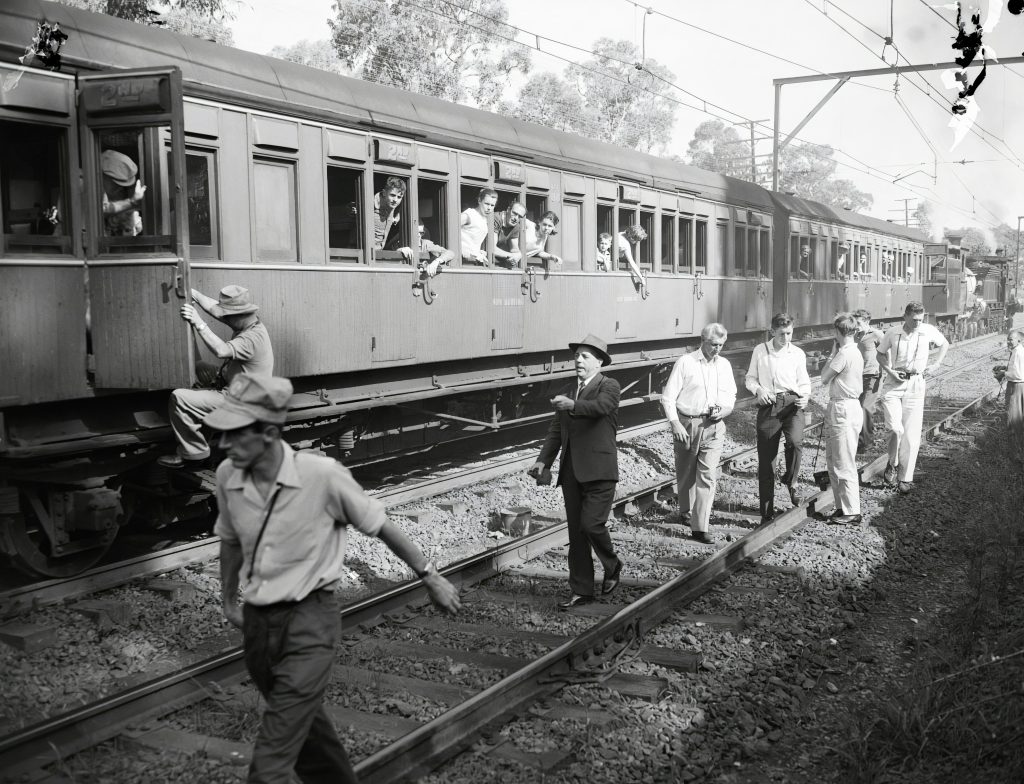Understanding Rail Gauge Baffle Components Rail gauge baffles play a crucial role in railway systems by maintaining the appropriate distance between the rails. This ensures that train operations remain safe and efficient. These components are specifically designed to offer lateral support against the dynamic forces exerted by passing trains, which helps stabilize the track structure. The proper functioning of rail gauge baffles is vital for the overall integrity of the rail network, as it prevents derailments and other operational disruptions.
Key Role of Rail Gauge Baffles in Rail Systems
The primary function of rail gauge baffles is to maintain gauge integrity, which is crucial for both the safety and performance of the railway system. They provide the necessary support to the rails, absorbing the stresses imposed by heavy loads and high speeds. In essence, rail gauge baffles are indispensable in ensuring that rails remain correctly spaced and aligned. The stability they provide contributes significantly to the smooth and safe movement of trains, minimizing the risk of operational failures.
Common Issues Affecting Rail Gauge Baffle Performance
Despite their robust design, rail gauge baffles can encounter various issues that may affect performance. Common problems include corrosion, wear and tear from constant use, and physical damage due to extreme weather conditions or mechanical impacts. Such issues can compromise their ability to maintain gauge integrity, posing safety risks and potentially leading to costly repairs. Regular maintenance and inspection are key to identifying and mitigating these problems early.
Scheduling and Planning Maintenance Intervals
Effective maintenance scheduling is paramount to ensure the longevity and reliability of rail gauge baffles. Establishing a systematic approach for maintenance intervals can prevent unexpected failures and extend the lifespan of these components.
Criteria for Determining Maintenance Schedules
Several factors need to be taken into account when establishing maintenance schedules for rail gauge baffles. These factors include the traffic load on the track, environmental conditions, historical performance data, and manufacturer recommendations. By assessing these aspects, maintenance teams can formulate a customized schedule that meets the unique requirements of their rail system, facilitating timely interventions to prevent minor issues from becoming significant problems.
Tools and Techniques for Predictive Maintenance
Predictive maintenance leverages advanced tools and technologies to anticipate the need for maintenance before failures occur. Techniques such as vibration analysis, thermographic inspections, and ultrasonic testing can provide early warnings of potential issues. By adopting these predictive tools, railway operators can plan maintenance activities more effectively, reducing downtime and enhancing the reliability of their rail gauge baffles.
Impact of Timely Maintenance on System Reliability
Timely maintenance of rail gauge baffles significantly impacts the overall reliability of the railway system. Regular inspections and preventive measures can help identify and rectify issues promptly, avoiding unexpected breakdowns. Ensuring that rail gauge baffles are in optimal condition contributes to the seamless operation of trains, enhancing safety and efficiency. The proactive maintenance approach also results in cost savings by minimizing the need for extensive repairs or replacements.
Inspection Methods for Rail Gauge Baffles
Regular inspection is a critical component of effective maintenance practices for rail gauge baffles. Implementing thorough inspection techniques helps in early detection of potential problems, ensuring timely corrective actions.
Visual Inspection Techniques
Assessing the condition of rail gauge baffles through visual inspections is a straightforward method. These inspections involve multiple steps to ensure a thorough evaluation.
Steps for Conducting Visual Inspections
During a visual inspection, maintenance personnel should meticulously examine the rail gauge baffles for any signs of wear, corrosion, or physical damage. This includes checking for cracks, surface deformities, and loose fasteners. Inspectors must also verify that the baffles are correctly aligned and securely in place. Detailed records of findings should be maintained to track changes over time.
Identifying Wear and Tear
Identifying wear and tear on rail gauge baffles is crucial for preventing failures. Inspectors should look for indications such as thinning of material, rust spots, and any form of deformation. Early detection of these signs allows for timely maintenance interventions, thereby preserving the integrity and functionality of the rail system.
Non-Destructive Testing (NDT) Methods
Non-destructive testing (NDT) methods offer a more detailed analysis of rail gauge baffles without causing damage. These techniques are essential for identifying internal flaws that are not visible through visual inspection.
Types of NDT Applicable to Rail Gauge Baffles
Various NDT techniques are suitable for examining rail gauge baffles, such as ultrasonic testing, magnetic particle inspection, and radiographic testing. Each technique offers unique benefits and is chosen according to the particular needs of the inspection.
Advantages of Using NDT in Inspections
The primary advantage of using NDT methods is the ability to detect subsurface defects, ensuring a thorough assessment of the rail gauge baffles. These techniques provide precise and reliable data, helping maintenance teams make informed decisions. Additionally, NDT methods minimize downtime, as they do not require the rail components to be disassembled for inspection.
Lubrication Practices to Enhance Longevity
Proper lubrication is a key maintenance practice that can significantly enhance the longevity and performance of rail gauge baffles. It helps reduce friction and wear, thereby extending the life of these vital components.
Importance of Proper Lubrication
Lubrication reduces friction between moving parts, preventing excessive wear and overheating. For rail gauge baffles, which experience constant dynamic forces, proper lubrication ensures smooth operation and minimizes the risk of mechanical failures. Keeping baffles well-lubricated also protects against corrosion and environmental degradation.
Selection of Lubricants for Rail Gauge Baffles
Selecting the appropriate lubricant is essential for maintaining rail gauge baffles effectively. Considerations should include the operational environment, load conditions, and manufacturer guidelines. High-performance lubricants capable of enduring extreme temperatures and pressures are typically favored to guarantee prolonged protection and optimal functionality.
Application Techniques for Optimal Results
Applying lubricants correctly is as important as selecting the right type. Maintenance teams should follow best practices for lubrication, ensuring even distribution and avoiding over-lubrication. Specialized tools, such as automated lubrication systems, can provide consistent and precise applications, reducing the likelihood of human error and ensuring the rail gauge baffles remain in excellent condition.
SAFE Rail Fastening System (Zhejiang) Co., Ltd.
The railway industry is constantly evolving, with new technologies and methods being developed to improve efficiency, safety, and reliability. In this context, the SFFST approach has emerged as a game-changer in the field of railway maintenance.
The SFFST approach emphasizes the importance of adopting a comprehensive and standardized process for rail gauge baffle maintenance. By following these proven practices, railway companies can ensure the safety of their passengers and employees while also maximizing the efficiency and stability of their operations.
Furthermore, the SFFST methodology is crafted to be both flexible and adaptable. This allows railway companies to tailor their maintenance practices to their specific needs and conditions. This ensures that the solution isn’t a generic one-size-fits-all but rather a customized approach that addresses the unique requirements of each railway operation.
Repair and Replacement Protocols
Determining When to Repair vs. Replace Components
Determining whether to repair or replace rail gauge baffle components requires a thorough assessment of their condition and performance. Factors such as the extent of damage, the frequency of issues, and the cost-effectiveness of repairs compared to replacements must be considered. If a baffle has sustained minimal damage and can be restored to optimal performance with a repair, then repairing it is often the practical choice. Conversely, if the component is extensively worn or damage recurs frequently, replacing it may be more prudent to ensure long-term reliability.
Repair Techniques for Common Damages
Welding and Fabrication Methods
Welding and fabrication methods are essential repair techniques for addressing damages in rail gauge baffle components. High-quality welding can restore the structural integrity of a baffle that has developed cracks or fractures. Fabrication techniques, such as adding reinforcements or replacing damaged sections, can also be employed to prolong the lifespan of the component. Both methods require skilled personnel and the appropriate equipment to ensure that the repairs meet safety and performance standards.
Surface Treatment and Reconditioning
Surface treatment and reconditioning involve processes such as grinding, polishing, and coating to restore the external condition of rail gauge baffle components. These methods are crucial for addressing surface wear and corrosion, ensuring that the baffles remain durable and effective. Applying protective coatings can also prevent future degradation and extend the service life of the components. Reconditioning is often paired with other repair techniques to provide a comprehensive restoration.
Replacement Procedures and Best Practices
When it becomes necessary to replace rail gauge baffle components, following best practices is crucial for a smooth and effective procedure. The process begins with selecting replacement parts that meet the required specifications and standards. Ensuring proper training and strict adherence to safety protocols during the installation process is vital to avoid accidents and maintain the integrity of the rail system. Additionally, documenting the replacement process and updating maintenance records are essential steps for tracking the history of the components and planning future maintenance activities.
Enhancing Maintenance Through Technology
Role of IoT in Predictive Maintenance
The integration of IoT (Internet of Things) technologies has revolutionized predictive maintenance for rail gauge baffle systems. IoT devices can continuously monitor the condition of the baffles, collecting data on parameters such as stress, temperature, and vibration. This real-time data enables maintenance teams to detect early signs of failure and schedule maintenance activities proactively. By leveraging IoT technology, railway operators can reduce unscheduled downtime, enhance safety, and optimize the performance of their rail systems.
Data Analytics for Performance Monitoring
Data analytics is instrumental in performance monitoring and maintenance planning for rail gauge baffle systems. By analyzing historical and real-time data, maintenance teams can identify trends, predict potential failures, and prioritize maintenance tasks. Advanced analytics tools can also provide insights into the effectiveness of maintenance strategies, helping to refine processes and improve outcomes. Implementing data-driven maintenance practices ensures that resources are utilized efficiently and that rail gauge baffle components are maintained in peak condition.
Software Solutions for Streamlining Maintenance Processes
Software solutions play a critical role in streamlining maintenance processes for rail gauge baffle systems. Maintenance management software can automate scheduling, track inventory, and generate reports, making it easier to manage and execute maintenance activities. Additionally, these solutions often come with mobile applications that allow maintenance personnel to access information and update records on the go. Implementing such software solutions enhances coordination, improves accuracy, and ensures that maintenance practices are consistent and effective.
Training and Certification for Maintenance Personnel
Required Skills and Certifications
Maintenance personnel tasked with rail gauge baffle components must have the required skills and certifications to perform their duties proficiently. Crucial skills encompass expertise in welding, fabrication, and non-destructive testing techniques, along with the capability to interpret data from predictive maintenance tools. Certifications from accredited organizations confirm that personnel are competent and comply with industry standards. Ongoing training and certification are essential to stay abreast of technological advancements and evolving maintenance practices.
Training Programs and Continuous Education Opportunities
Training programs and continuous education opportunities are essential for maintaining a competent and effective maintenance workforce. Railway companies should invest in comprehensive training programs that cover the latest techniques and technologies in rail gauge baffle maintenance. Partnerships with technical institutes and participation in industry conferences can provide additional learning opportunities. Continuous education ensures that maintenance personnel stay updated with best practices and can implement the most effective maintenance strategies.
Monitoring Outcomes and Continuous Improvement
Measuring Effectiveness of Maintenance Practices
Measuring the effectiveness of maintenance practices is crucial for ensuring the reliability of rail gauge baffle components. Key performance indicators (KPIs) such as failure rates, maintenance costs, and downtime can provide valuable insights into the success of maintenance activities. Regular audits and performance reviews help identify areas for improvement and validate the impact of implemented strategies. By consistently measuring outcomes, railway companies can ensure that their maintenance practices are delivering the desired results.
Strategies for Continuous Improvement in Maintenance Programs
Continuous improvement is a fundamental aspect of maintenance programs for rail gauge baffle components. Strategies such as adopting new technologies, refining maintenance schedules, and incorporating feedback from inspections can drive ongoing improvements. Engaging maintenance personnel in the process and encouraging a culture of innovation also contribute to enhanced maintenance outcomes. By focusing on continuous improvement, railway companies can ensure that their maintenance programs evolve and remain effective in addressing the challenges of a dynamic railway environment.









